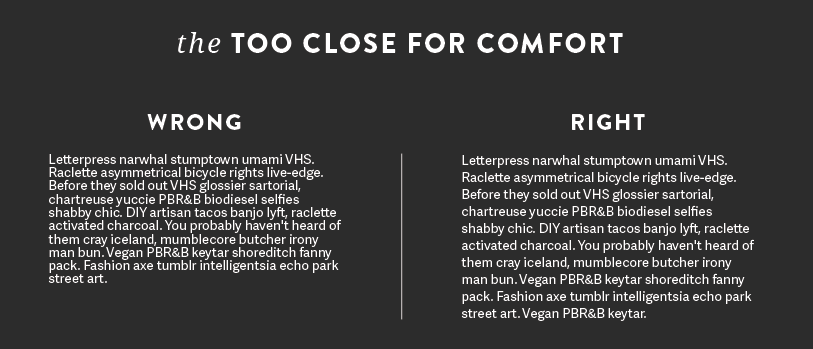7 Website Design Tips for Ecommerce Stores

There are many ways you can go when it comes to website design, but for ecommerce, it’s all about optimizing for sales.
It’s fair to say that there are many ecommerce websites that don’t do a great job of web design. Back in the day when expectations were lower, they may have still had some success with sales, but these days, people associate poor design with low expectations or worse: a lack of trustworthiness.
The bottom line is, getting your design right is good for your bottom line! Here are some of our design tips for better ecommerce websites:
#1. Have a design hierarchy
Visual hierarchy is an important design principle because it helps to keep the priority of your content clear to the viewer. Use of hierarchy means you can direct your shoppers to certain page elements in the priority that you choose.
Visual hierarchy is achieved by size and/or weight, as well as the placement of design elements. For example, a header is a basic use of visual hierarchy, with a larger font size and heavier weight. People naturally tend to look at bold text first.
Your placement of design elements can also be used to draw the eye in the direction that you’d like. Visual elements such as logos, buttons or key images can be useful for establishing a hierarchy.
#2. Have a clutter-free homepage
The homepage is important because it needs to communicate what you do and who you do it for very quickly. Most people shopping online will browse and skim the page very quickly, so keeping a minimalist design can help to get your message across quickly.
“Busy” pages can be overwhelming. People don’t know where to look or what to click on. Your homepage doesn’t have to remain static, but change it up to reflect your most important goals at the time (e.g. if it’s a sale, then highlight the sale).
Your most important content should be kept above the fold so visitors don’t have to scroll to find information. Use of blank space is also a good technique for keeping your design balanced and uncluttered. By spacing out your content, the important parts become more legible.
#3. Use high quality images
It’s still surprising to see how many websites have obviously spent a lot of time on design and web copy, but have scrimped on the imagery. Frankly, if a product doesn’t have high quality images with its listing, it’s unlikely to sell.
You also have to remember that when people shop in stores, they pick up products, turn them over and examine them from different angles. This means you need sharp, high quality images of various angles of your products. People like to be able to zoom in and inspect details, so having the zoom function is also important. Include video as well where you can.
Of course, don’t neglect your home page or any other page where images are found either. HIgh quality images leave a professional impression and can also be used to showcase your brand voice and image.
#4. Keep your navigation simple
People look for convenience when they shop online, so one way you can help them is with clear menus and simple navigation. You need a logical flow that is easy for people to follow, including when they want to go back to find something they saw previously. They don’t want a maze that is impossible to get around.
Think about what happens when they add an item to the cart, too. You want them to keep shopping! Some websites make this unnecessarily difficult by forcing them to use the “back” button from the cart, instead of being able to navigate to the next item.
Useful filtering options is another feature to consider. People often shop with specific parameters in mind, and it’s helpful if they can filter for their choices, especially if there are a lot of items in the category.
Another key feature that can help is to have a good “search” option. The best ecommerce search features return highly relevant results for the keywords entered and actually make the customer’s task in finding products easier. It’s worth testing out to make sure your search function is actually useful.
Test your website’s search function to make sure it returns useful results for customers Share on X#5. Make content easy to read
Your web design should have a high level of readability, meaning that it’s easy for people to recognize words and read any sentences without having to strain to make them out. They should be able to skim read with ease and understand the gist of what you’re saying.
Where websites go wrong is with small letter sizes, tricky fonts, lack of contrast and poor kerning (the space between words and letters). For example, if you’ve got paragraphs of text to read, a font in the sans serif family tends to be easier to read. Serif fonts (like Times New Roman) tend to look “busy” and make it harder to read.
Be careful with use of any “fancy” fonts or your use of kerning as sometimes these can result in words reading entirely differently than what you intended to the beholder…
#6. Be consistent with your branding
Your web design should complement your brand voice, tone and products. Everything about the look, feel and words that you use should be consistent across your website and any other channels that you use to market your ecommerce business.
Branding conveys your identity, your values and your mission for your business. Design plays a key role in this by either reinforcing or detracting from your desired branding. Consistency is important because it makes you recognizable in the eyes of your customers. If your design features are all over the place, you will be less memorable as it is more difficult for people to position your company in their minds.
#7. Distraction free checkout
Many people browse ecommerce sites, add items to the cart, then drop out somewhere through the checkout process. This often happens when there are too many steps or things that are otherwise distracting.
A distraction free checkout means that any components that could be a distraction for the customer are removed, so that their focus is entirely on checking out. This means no navigation menus and very minimalist headers and footers.
At the same time, the process of checking out should be as minimal as possible. Customers don’t like too many steps, having to fill out too many forms or any surprises in terms of price. The cleaner you can keep the check out, the better your chances of reducing cart abandonment.
Final thoughts
You can have some of the best quality products in the world, but if your web design isn’t optimal for the ecommerce process, you will struggle to make sales.
You could look at web design from the perspective of what it says about your business, too. Clean, high-quality designs suggest a quality business to the customer. When you pay attention to detail, that suggests you are trustworthy.
Do you have a WooCommerce website that could use a streamlined, distraction-free checkout? Get a free 7 day trial of CheckoutWC here.

